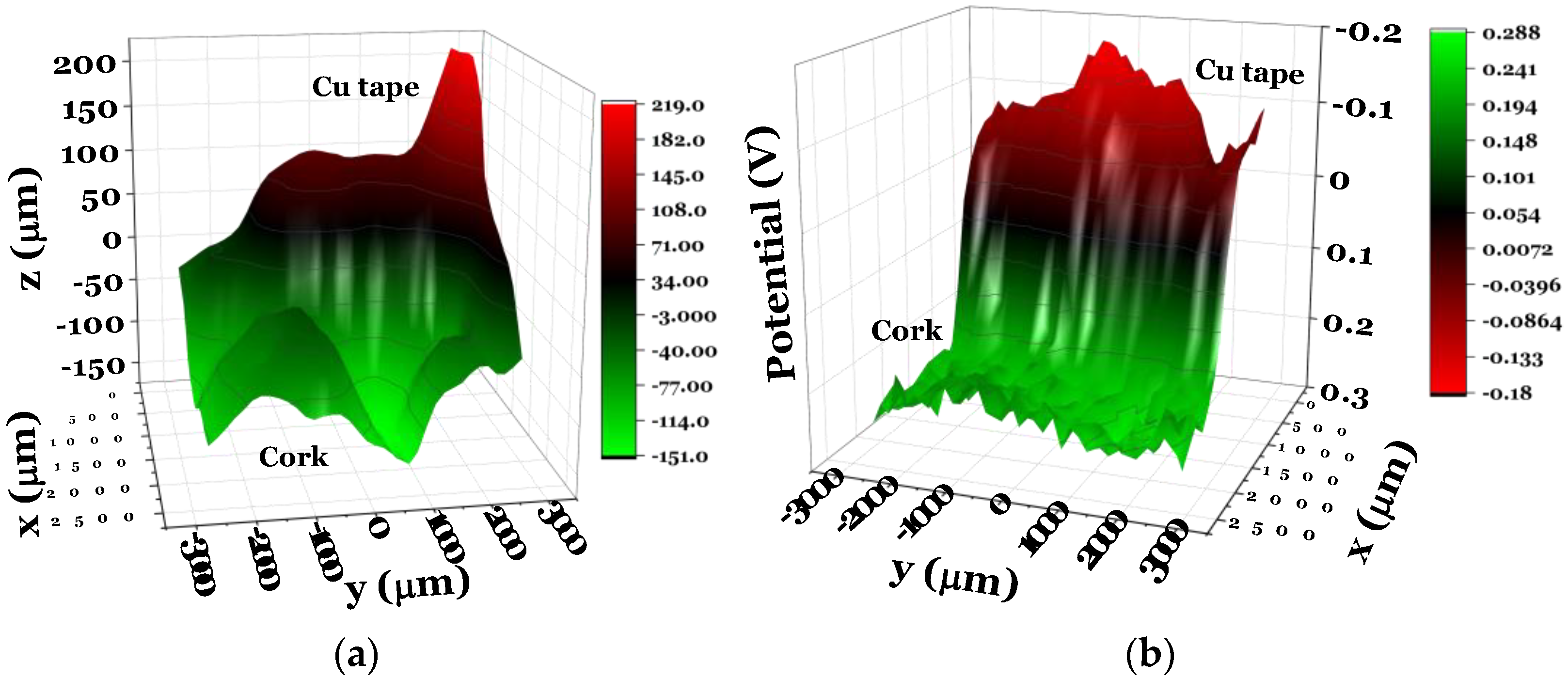Structural Cork in Ferroelectric Solid-State Devices by Scanning Kelvin Probe †
Author Contributions
Funding
Institutional Review Board Statement
Informed Consent Statement
Data Availability Statement
Conflicts of Interest
References
- Chanut, J.; Wang, Y.; Dal Cin, I.; Ferret, E.; Gougeon, R.D.; Bellat, J.P.; Karbowiak, T. Surface properties of cork: Is cork a hydrophobic material? J. Colloid Interface Sci. 2022, 608, 416–423. [Google Scholar] [CrossRef]
- Braga, M.H.; Murchison, A.J.; Goodenough, J.B. Dataset on a primary lithium battery cell with a ferroelectric Li-glass electrolyte and MnO2 cathode. Data Brief 2020, 29, 105339. [Google Scholar] [CrossRef]
- Braga, M.H.; Ferreira, J.A.; Stockhausen, V.; Oliveira, J.E.; El-Azab, A. Novel Li 3 ClO based glasses with superionic properties for lithium batteries. J. Mater. Chem. A 2014, 2, 5470–5480. [Google Scholar] [CrossRef] [Green Version]
- Zance, S.S.; Ravichandran, S. Electrochemical surface modification of carbon for enhanced water electrolysis. Appl. Phys. A 2019, 125, 1–7. [Google Scholar] [CrossRef]
- Pötzelberger, I.; Mardare, C.C.; Burgstaller, W.; Hassel, A.W. Maximum electrocatalytic oxidation performance for formaldehyde in a combinatorial copper-palladium thin film library. Appl. Catal. A Gen. 2016, 525, 110–118. [Google Scholar] [CrossRef]

Publisher’s Note: MDPI stays neutral with regard to jurisdictional claims in published maps and institutional affiliations. |
© 2022 by the authors. Licensee MDPI, Basel, Switzerland. This article is an open access article distributed under the terms and conditions of the Creative Commons Attribution (CC BY) license (https://creativecommons.org/licenses/by/4.0/).
Share and Cite
Guerreiro, A.N.; Braga, M.H. Structural Cork in Ferroelectric Solid-State Devices by Scanning Kelvin Probe. Mater. Proc. 2022, 8, 114. https://doi.org/10.3390/materproc2022008114
Guerreiro AN, Braga MH. Structural Cork in Ferroelectric Solid-State Devices by Scanning Kelvin Probe. Materials Proceedings. 2022; 8(1):114. https://doi.org/10.3390/materproc2022008114
Chicago/Turabian StyleGuerreiro, António Nuno, and Maria Helena Braga. 2022. "Structural Cork in Ferroelectric Solid-State Devices by Scanning Kelvin Probe" Materials Proceedings 8, no. 1: 114. https://doi.org/10.3390/materproc2022008114
APA StyleGuerreiro, A. N., & Braga, M. H. (2022). Structural Cork in Ferroelectric Solid-State Devices by Scanning Kelvin Probe. Materials Proceedings, 8(1), 114. https://doi.org/10.3390/materproc2022008114






